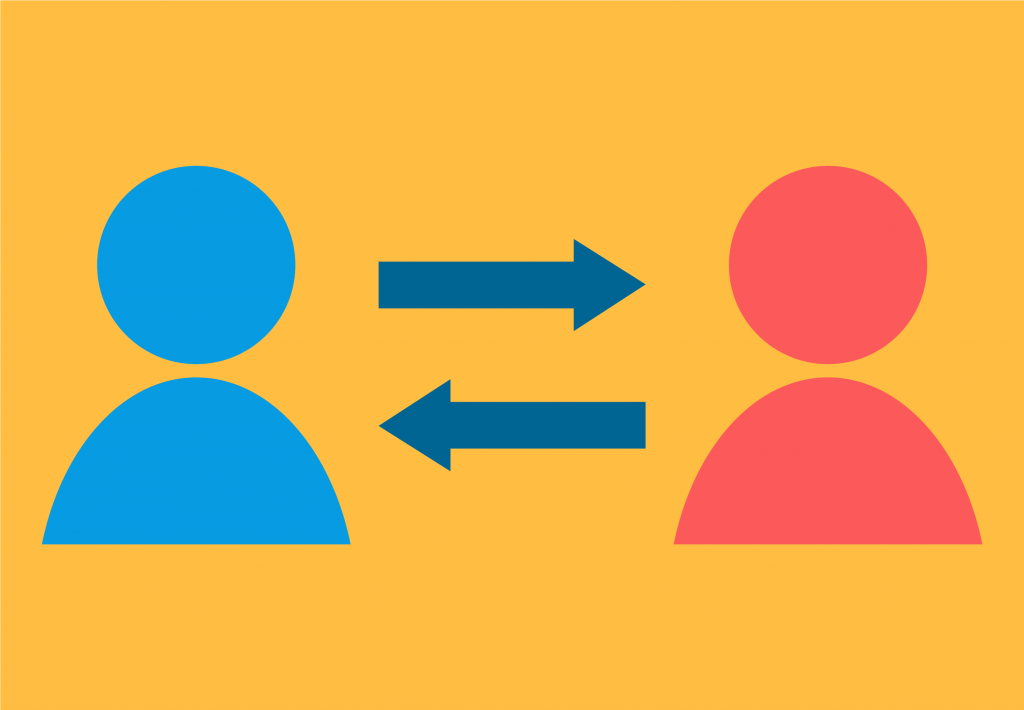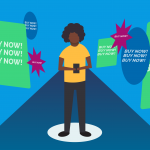Keep your business top of mind by using these customer retention strategies.
Every business struggles with keeping their customers engaged and loyal. It’s a costly struggle, too. The stakes are high if you don’t get it just right. Studies say it can cost five times more to attract a new customer than it does to retain an existing one.
Many retailers use a dated, generic approach to their customer retention programs. However, consumer behavior has evolved and continues to change every day. Shoppers now expect a seamless, consistent, and personalized experience. This extra burden requires companies to continuously optimize and update their customer retention strategies.
So how can you ensure your customers stay with you for the long haul?
We’ve compiled a list of four strategies you can use to see improved results:
1. Offer relevant communication.
Customers shouldn’t be strangers. Your team should talk to them during all stages of the sales funnel, including awareness, consideration, conversion, and advocacy. Being present throughout the entire process ensures your company is poised to drive higher engagement. However, this doesn’t mean you can use a “one-size-fits-all” approach. Instead, make it feel like you’re talking one-on-one with your customer. Poor personalization can alienate customers and make your company less trustworthy. You don’t want to just sell, you want to educate customers and empower them to make their own strategic decisions.

HubSpot’s customer education program is a great example of relevant communication. Their program teaches customers how to use their products through courses and videos. It answers the many questions a new customer may have while onboarding their product. This type of program is perfect for keeping customers engaged and helps solve their problems. Consider using this type of communication when examining your customer retention program.
2. Evaluate what works (and what doesn’t).
Being in communication with your customers should always involve a two-way channel. It’s helpful to you and your business to get feedback, that way you can apply your consumers’ suggestions in order to enhance their experience.

You can continue with what is working and adjust what isn’t. There are a variety of ways to do this. You can gather feedback through surveys or by simply talking to your customers in a way to get them to open up about their experience shopping with you. Loyal customers are worth a lot. It benefits you to make changes to reduce pain points and friction in the customer journey.
Improving results may require you to look at your strategies again. With any strategic program, you should constantly assess the return on each decision.
3. Utilize an omnichannel approach.
The entire shopping experience should be interconnected in order to provide a seamless buyer journey. Keeping your customer engaged at every step is key to creating the ultimate shopping experience.
This is becoming increasingly difficult given consumers’ ever-changing needs, but the payoff is worth it. Simply put, you should aim to create a fully-integrated shopping experience that unites everything from mobile-browsing to brick-and-mortar visits.
Here’s how you can get started:
- Customer research. All good marketing strategies begin with research into who your customers are. Find out which platforms they use to shop and what their pain points are. As a starting point, use the Acquisition reports in Google Analytics to see where your site visitors are coming from and what devices they use to conduct web searches.
- Connect with the consumer offline and online. With ad targeting and retargeting, you can deliver timely, relevant offers to your pool of customers based on what actions they’ve taken. You might notice that before visiting your store, customers check your products out on your website. You can leverage this information to better target your customers by providing them with more personalized information. Optimizing your content for mobile devices is a great way to begin the process of bridging the divide between offline and online experiences.
4. Surprise and delight.
Keeping your customers happy begins with exemplary and consistent customer service. To take your customer experience to the next level, though, you need to be creative. Maybe that means offering free, high-speed Wi-Fi or supporting your existing services with new, intelligent solutions that can enhance the shopping experience at your store.

One way to keep your customers happy is to use tools to help you better understand where your customer is in the buying process. FunnelAI provides a platform that can follow your customers and alert you of any relevant live events. For example, if your customer posts that they’re expecting a baby, you can reach out and offer a deal on a new family SUV.
A Cox Automotive study from earlier this year found that 70% of consumers who purchased or leased from a dealer did not return for service in the past year. That equates to roughly $266 billion in annual lost revenue across all franchise dealers. This presents an incredible opportunity for auto marketers to increase customer satisfaction, loyalty, and retention.
Overall, you should be looking at all your processes through the eyes of the customer. Making sure your shopping experience is seamless and personalized will help you retain as many customers as possible and improve customer relationships.








